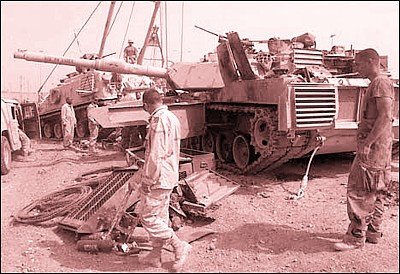Army chief campaigns for increased funding

WASHINGTON - The Army is campaigning hard to ensure that it has enough money to keep up the battles in Iraq and Afghanistan and to prepare for potential future conflicts.
Gen. Peter J. Schoomaker, the Army's chief of staff, says the service needs $138 billion in 2008 to ensure it can field as many as 19 combat brigades at any given time, as called for by the Pentagon's latest four-year strategy. That figure is about $20 billion more than Congress approved for the Army in the 2007 budget.
The Army has 17 combat brigades deployed in Iraq and Afghanistan - a total of about 136,000 soldiers - but keeping those troops in battle has put unprecedented strain on the Army's funding, despite an estimated $507 billion that Congress has set aside since 2001 to pay for the wars.
But with more boots on the ground than any other service, the Army also has borne the brunt of manpower and equipment losses. More than 2,100 of the 3,100 U.S. troops killed in Iraq and Afghanistan have been Army soldiers. The Army plans to spend $17.1 billion this year to replace or repair equipment that's been lost or damaged, including more than 2,000 vehicles awaiting overhaul.
It's against this backdrop that Schoomaker appeared this week at the Army's annual convention in Washington and called for the country to increase defense spending. It was part of a public relations campaign not often seen among top uniformed military officials.
While he didn't name a figure, the general said the Army's continued effectiveness in the war would depend upon a "national commitment" to recruit, train and equip soldiers and support them and their families properly.
"This is a matter of national priorities, not affordability," Schoomaker said.
The call for increased defense spending comes at a time when the United States is spending about 4 percent of its gross domestic product on defense. The White House predicts defense spending will fall in coming years.
Schoomaker said spending 4 percent of GDP on defense is a historic low during a war. The United States spent 38 percent of its GDP on defense during World War II, 14 percent during the Korean War and 10 percent during the Vietnam conflict.
As one seasoned non-commissioned officer put it, professional armies are expensive to maintain and Schoomaker is being straightforward about what it's going to take to support the all-volunteer Army in a time of protracted war.
"The nation has not realized that yet," said the officer, a sergeant major with more than 30 years in uniform who spoke on condition of anonymity because he wasn't authorized to speak publicly. "The recent wars just now are bringing it to light. The (chief) is just saying that we're through pretending that everything is OK."
Read the rest at the San Jose Mercury News
Related Link:
General: White House budget games affecting readiness; billions more needed now
Related Link:
Army personnel costs have doubled, Pentagon $2 billion short for 2007
Related Link:
Rumsfeld: Army on own in budget request

<< Home